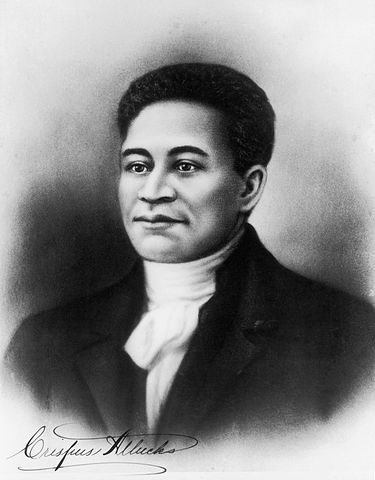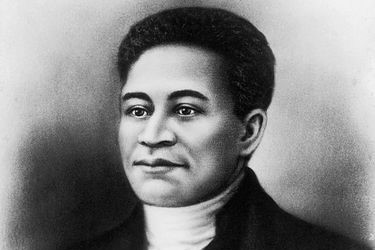Crispus Attucks (1723 – 1770) was an enslaved man born in South Framingham of African and Native American parents. His father, Prince Yonger, was thought to have been a slave brought to America from Africa and his mother Nancy Attucks was a Natick Indian. Attucks was a direct descendant of John Attucks, an Indian killed in King Philip’s War in 1676.

Attucks Master Deacon William Brown, a miller and clothes maker, built a gristmill and then a fulling mill on what were deep rushing rapids of the Cochituate Brook. Attucks worked the mill cleaning cotton harvested by southern slaves until he disappeared one day.
According to The Black presence in the Era of the American Revolution, Master Brown advertised in the Boston Gazette in October 2, 1750, a description that referred to Attucks,” Ran away from his Master William Brown from Framingham, on the 30th of Sept. last, a Molatto Fellow, about 27 Years of age, named Crispas, 6 feet two inches high, short curl’d Hair, his Knees nearer together than common, had on a light colour’d Bearskin Coat.” The owner offered ten pounds reward and warned ship captains not to hire him. But Attucks escaped to Nantucket, Massachusetts and sailed as a harpoonist on a whaling ship. It is thought that he was a sailor on cargo ships plying the West Indies.

By 1770 Boston became “a storm center of brewing revolt” according to Benjamin Quarles in The Negro in the American Revolution. The British had two regiments in the city following protests by the colonists against unfair taxes. The soldiers led riotous lives and raced horses on the Common. A barber’s apprentice was struck when a soldier refused to pay for a haircut. News spread quickly and angry citizens gathered in various places around town. Someone rang the church bell – which usually meant a fire – but in this case it was an explosive situation.
In an open square, after nightfall, in front of Boston’s Town House a rowdy mob wielding sticks and snowballs with rocks in them attacked the British soldiers. The British opened fire killing a tall, black sailor who took two musket balls to the chest and died instantly. Attucks was the first to die in the Boston Massacre on March 5, 1770.
Facts
In 2000, the former Old Connecticut Path bridge over Cochituate Brook was renamed after Attucks. The Framingham Historical Commission purchased a plaque and the African-American Heritage Committee oversaw the dedication day. The bridge is located near 619 Old Connecticut Path.
Further Reading
A Short Narrative of the Horrid Masscre in Boston, Perpetrated in the Evening of the Fifth Day of March, 1770. Messirs. Edes & Gill, 1770. The Annotated Newspapers of Harbottle, Dorr Jr. Massachusetts Historical Society. https://www.masshist.org/dorr/volume/3/sequence/700. Accessed 13 Mar. 2017.
Bibliography
“Crispus Attucks.” Notable Black American Men, Book II, edited by Jessie Carney Smith, Gale, 1998. Biography in Context, libraries.state.ma.us/login?gwurl=http://link.galegroup.com/apps/doc/K1622000013/BIC1?u=fpl&xid=6af221d6. Accessed 13 Mar. 2017.
Davis, Burke. Black Heroes of the American Revolution. Harcourt Brace and Company, 1976.
Herring, Stephen. Framingham; An American Town. The Framingham Historical Society, The Framingham Tercentennial Commission, 2000.
Kelley, Meg, and Jane Whiting. The ABCs of Framingham History. Framingham Historical Society and Museum, Framingham Rotary Club, 2006.
Quarles, Benjamin. The Negro in the American Revolution .Simon and Schuster. 1964.
Temple, J. H. History of Framingham, 1640-1880. The Town of Framingham, 1887.
